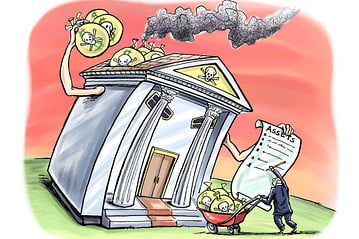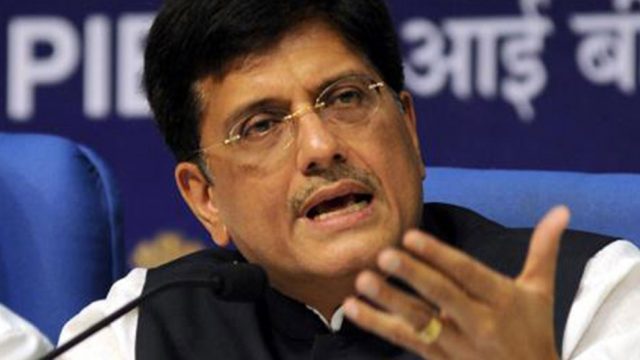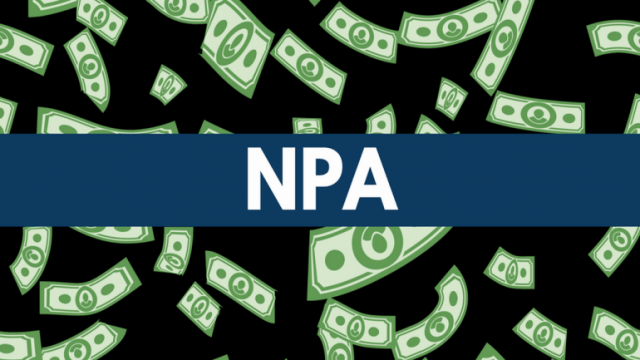Demystifier: An ED Original where the content is written in such a way that it is knowledgeable and easy to comprehend at the same time.
The recent announcement made by Union Minister Piyush Goyal (current in-charge of the finance ministry) to form a committee which could assess the idea of special asset management companies, or commonly known as a “Bad Bank” to take over bad loans from other banks, is a point to be pondered upon.
This concept was debated when Arun Jaitley toyed with such an idea in 2016.
Now, the question is what is a bad bank? And, why is there so much commotion behind such an idea?
To understand and analyse the situation, let’s demystify and understand the “bad bank” concept clearly first!
What Is A Bad Bank?:
A bad bank is sort of an aid by the government to the banks. It’s a differentiated bank which takes over the bad loans and other non-performing assets of the banks at some discounted price and then recover these amounts (NPAs and bad loans) from the defaulters on its own.

In a way, these bad banks are helping other banks to manage their non-performing assets so that they could focus more on their routine operations without paying much heed to such defaulters.
(Non-performing assets are those assets which fail to generate income for the lender, as such the assets for which the interest on the principal amount is “past due” along with it, is something which is termed as an NPA, because you can understand that this asset has, in fact, failed to fulfil its primary objective of generating some sort of revenues.)
Related: PSB Merger Might Lead To A Robust Govt. Banking System Which Can Beat The Private Banking Monopoly
Salient Features Of Bad Banks:
The idea of a bad bank by the Indian Government is not a fresh cup.
In fact, the Chief Economic Adviser Mr. Arvind Subramanian had already suggested the creation of “PARA- Public Sector Asset Rehabilitation Agency” before.
Some salient features of such bad banks include the following:
#1. Bad banks usually deal with the more complex cases of NPAs and are mostly capitalised under the umbrella of government.
#2. These banks are usually decentralised in nature, which further helps in solving the problems that could arise on the account of the lack of co-ordination while discounting the NPAs.
#3. A bad bank takes care of all the incentives which are, usually, absent in the bank personnel when they sell their NPAs to such asset reconstruction companies.
Why Is There So Much Fuss Over The Announcement Made By Piyush Goyal?:
The recent circular issued by RBI in February 2018 commands the action that all the corporate giants which have default bank payments for so long, need to go for bankruptcy proceedings.
Many of these giants have strong relations with Modi government and any such step in the pre-election year could shake the land-base for them.
The power sector of India is filled with a plethora of NPAs and Piyush Goyal has demanded to exempt the sector from the ambit of such circular, while RBI has denied to do so because that could result in a litigation from those discriminated against.
May be, this could be the probable reason why Piyush Goyal has proposed such a moot concept now, which was debated earlier as well.
Here, comes the turning point, now RBI has denied to exempt the power sector, and according to the industry experts, the creation of a bad bank will mostly be dominated by the power sector.

So, yes, this is a way, how Piyush Goyal is cleverly trying to vouch his stand of the exemption of power sector from the circular issued, and that’s how, RBI has also been grippled in the debate subtly.
Bad banks dominated by the power sector will obviously provide the giants enough time to deal with the issues, as the creation of a bad bank, in itself, is very time-consuming (time-consumption is a point which Arun Jaitley put forth in 2016, making the concept, moot in nature).
This concept has always failed to gain any momentum as such, plus, whether these knots of dealing with NPAs via bad banks are sorted out or not; banking reforms including the refreshment of insolvency and bankruptcy code along with the back bankers taking strict actions against such defaulters, are the need of the hour!
Image Credits: Google Images
Sources: The Wire, The Hindu, Business-Standard + more
You’d Also Like To Read:
http://edtimes.in/2018/06/cryptocurrency-rehab-centre-is-now-open-for-addicted-users-who-are-over-hooked-to-bitcoins-etc/

































